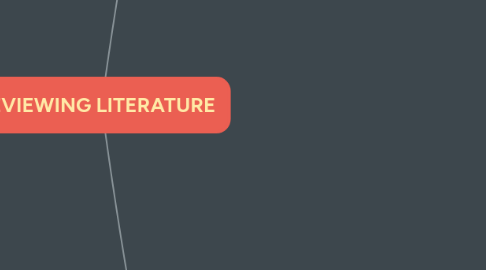
1. THE FUNCTIONS OF THE LITERATURE REVIEW IN RESEARCH
1.1. THE PLACE OF THE LITERATURE REVIEW IN RESEARCH
1.1.1. Funciones
1.1.1.1. It helps you establish the links between what you are proposing to examine and what has already been studied.
1.1.1.2. It enables you to show how your findings have contributed to the existing body of knowledge in your profession.
1.1.1.3. It provides a theoretical background to your study.
1.1.1.4. It helps you to integrate your research findings into the existing body of knowledge.
1.2. THE LITERATURE REVIEW
1.2.1. Bringing clarity and focus to your research problem
1.2.1.1. Involves a paradox
1.2.1.2. You cannot effectively undertake a literatura search without some idea of the problem you wish to investigate
1.2.1.3. Helps you to conceptualise your research problem clearly and precisely and makes it more relevant and pertinent to your field of enquiry
1.2.1.4. It will help you to focus your study on areas where there are gaps in the existing body of knowledge, thereby enhancing its relevance.
1.2.2. Broadening your knowledge base in your research area
1.2.2.1. Review is to ensure you read widely around the subject area in which you intend to conduct your research study
1.2.2.2. A thorough literature review helps you to fulfil this expectation
1.2.2.3. It helps you to understand how the findings of your study fit into the existing body of knowledge
1.2.3. Enabling you to contextualise your findings
1.2.3.1. Obtaining answers to your research questions is comparatively easy
1.2.3.2. It is important to place your findings in the context of what is already known in your field of enquiry.
2. HOW TO REVIEW THE LITERATURE
2.1. Searching for the existing literature in your area of study.
2.1.1. Books
2.1.1.1. Books are a central part of any bibliography
2.1.1.2. He best way to search for a book is to look at your library catalogues
2.1.1.3. The main advantage is that the material published in books is usually important and of good quality
2.1.2. Journals
2.1.2.1. Locate the hard copies of the journals that are appropriate to your study;
2.1.2.2. Look at citation or abstract indices to identify and/or read the abstracts of such articles;
2.1.2.3. Search electronic databases
2.1.3. The Internet
2.1.3.1. The Internet has become an important tool for finding published literature
2.1.3.2. You can identify published material in books, journals and other sources with immense ease and speed
2.1.3.3. Searching through the Internet is very similar to the search for books and articles in a library using an electronic catalogue
2.2. Reviewing the selected literature.
2.2.1. The next step is to start reading them critically to pull together themes and issues that are of relevance to your study
2.2.2. To construct the theoretical framework for the evaluation study
2.2.2.1. Note whether the knowledge relevant to your theoretical framework has been confirmed beyond doubt.
2.2.2.2. Note the theories put forward, the criticisms of these and their basis,
2.2.2.3. Opinión about the validity of these differences
2.2.2.4. Ascertain the areas in which little or nothing is known
2.3. Developing a theoretical framework.
2.3.1. The information obtained from different books and journals now needs to be sorted under the main themes and theories, identifying the unanswered questions or gaps
2.3.1.1. Universal;
2.3.1.2. More specific (local trends or a specific programme).
2.3.2. The literature deals with a number of aspects that have a direct or indirect bearing on your research topic
2.4. Developing a conceptual framework.
2.4.1. The conceptual framework is the basis of your research problem.
2.4.2. It stems from the theoretical framework and focuses on the section which become the basis of your study
2.4.3. The conceptual framework describes the aspects you selected from the theoretical framework to become the basis of your enquiry.
